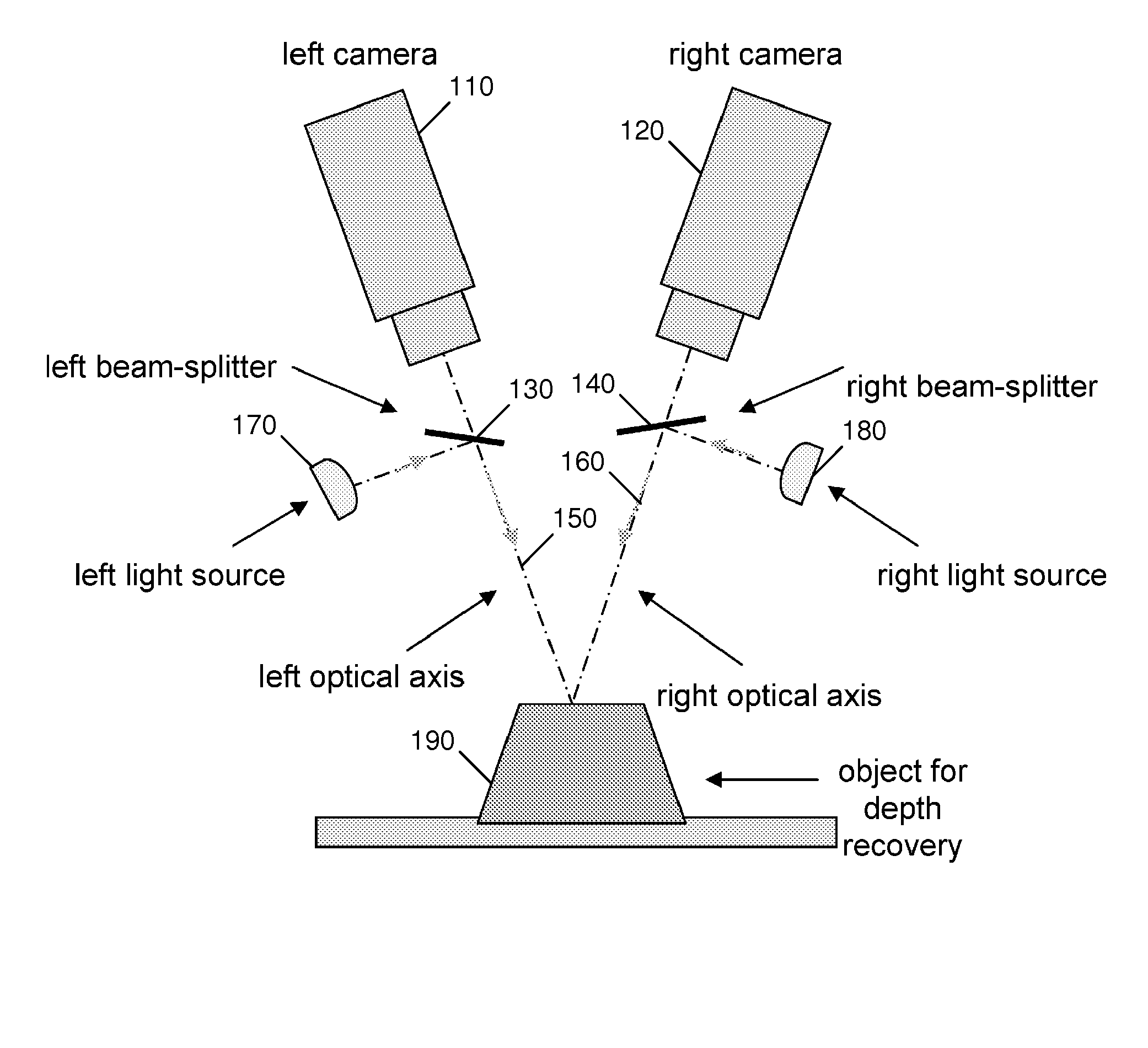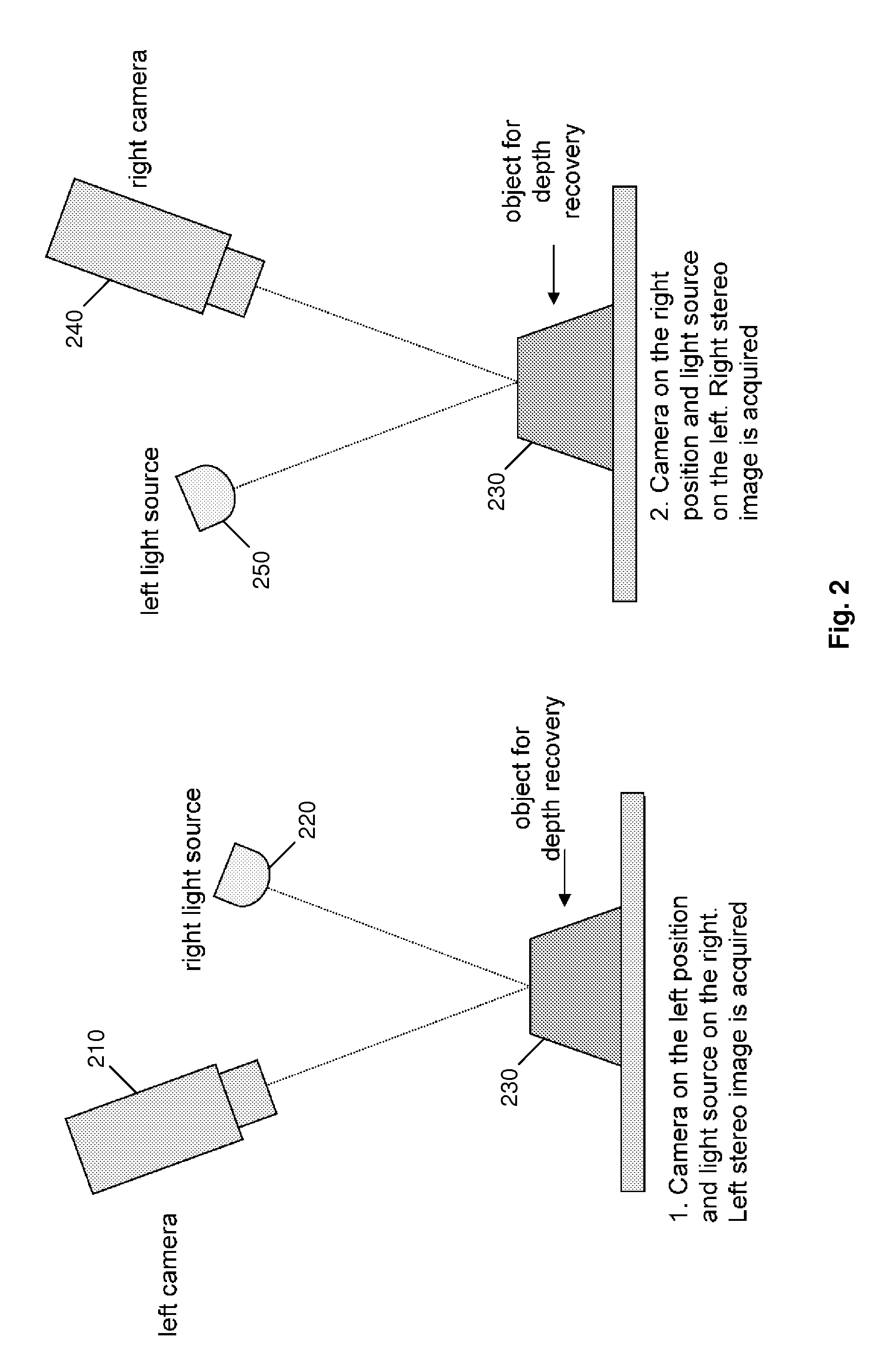Fast three dimensional recovery method and apparatus
a three-dimensional recovery and fast technology, applied in the field of stereo vision, can solve the problems of computational cost, bottleneck on production lines, poor results among other models widely used,
- Summary
- Abstract
- Description
- Claims
- Application Information
AI Technical Summary
Benefits of technology
Problems solved by technology
Method used
Image
Examples
Embodiment Construction
[0044]System Configuration
[0045]FIG. 1 illustrates the general principle of the invention. Left camera 110 and right camera 120 capture images from object 190. A left light source 170 and a left beam-splitter 130 are utilized so that object 190 is illuminated along left optical axis 150 when an image is captured by right camera 120, and similarly right light source 180 and right beam-splitter 140 are utilized to illuminate object 190 along right optical axis 160 when an image is captured by left camera 110.
[0046]The image acquisition process is illustrated in more detail in FIG. 2. Left camera 210 captures an image of object 230 when illuminated by right light source 220. In this manner the left stereo image is acquired. Right camera 240 captures an image of object 230 when illuminated by left light source 250. In this manner the right stereo image is acquired. After both images have been acquired, the present invention can recover depth information, as is described in detail below....
PUM
 Login to View More
Login to View More Abstract
Description
Claims
Application Information
 Login to View More
Login to View More - R&D
- Intellectual Property
- Life Sciences
- Materials
- Tech Scout
- Unparalleled Data Quality
- Higher Quality Content
- 60% Fewer Hallucinations
Browse by: Latest US Patents, China's latest patents, Technical Efficacy Thesaurus, Application Domain, Technology Topic, Popular Technical Reports.
© 2025 PatSnap. All rights reserved.Legal|Privacy policy|Modern Slavery Act Transparency Statement|Sitemap|About US| Contact US: help@patsnap.com



